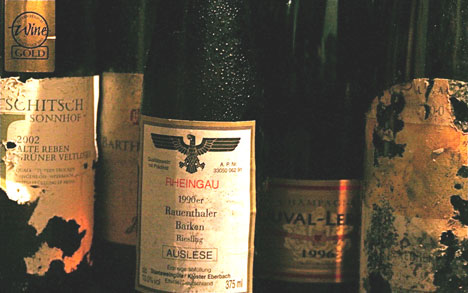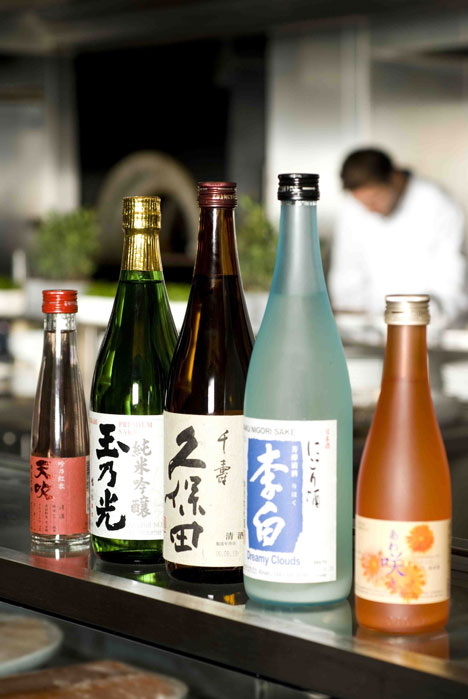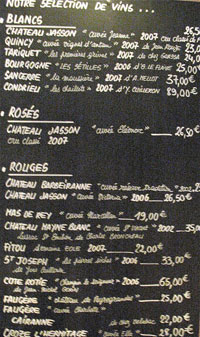Well, it was one of those very slightly disingenuous questions that I occasionally can't help asking when communicating with waiters of all genders and specialisations. And that happens more often than with diners who go to restaurants just for the pleasure of it. Since I also do this professionally - which includes dining alone from time to time - the probing chit-chat with young waiters, sommeliers and maitres is excusable: as a job-related continuing education as well as a pastime.
However, the curious questions at the table can be fun. But I am very careful not to fall into the kind of waiters' chat-up line that some guests practise when they are at an advanced stage of comfort and equally intensive alcohol consumption. "Yes, what's her name, our waitress?" the customer next to me in a one-star restaurant in the Palatinate recently bawled, only to continue with various allusions to the lady's figure. "You should eat more, you're so slim." The man had now taken the bait and continued to torment the young head waitress with all kinds of rude anecdotes even after I had already taken the change. She couldn't avoid the situation and send a colleague ahead, the waitress, because she was all alone in the dining room at noon; the best restaurants are also feeling the crisis, especially at noon.
 |
| Old white wines often go amazingly well with food |
Back to my initial question, which was asked nowhere else but in St. Moritz, roughly where Boris Becker has just married his Lilly, Sandy or Barbara. Served by a waitress from Swabia, we had bresse chicken with curry and slightly spicy basmati rice. I wanted to know what kind of wine could be recommended to go with it, and the subtle insinuation was that I already had a feeling that I wouldn't like the answer. The chef de rang parried glibly and announced that he preferred a Blauburgunder (Pinot Noir) from a renowned Graubünden producer - which, by the way, was clearly characterised by wood and had a lush, spicy flavour. I must have raised my eyebrows, because the lady added a second recommendation. Chardonnay, from the same winemaker and, as I knew, also clearly influenced by the barrique. For Bacchus' sake! Where does one get the abstruse idea that spicy poultry dishes and wood tannins could harmonise? I declined with thanks, probably muttering something like "I'm not sure that would go well" and pondered during the rest of the otherwise excellent meal why there can't be a better service briefing in one of the most expensive restaurants in the Engadine - or whether the harsh climate at 1,800 metres above sea level encourages the enjoyment of woody wines.
 |
| Sake - sometimes an alternative to grape wine (Photo: Hyatt% Berlin) |
Incidentally, the incident was no exception. In fact, waiters of all stripes are often guided more by traditions, fashions or the habits of their regular customers than by what really goes best with the food. To be fair, most diners have themselves to blame for such questionable recommendations, because they rarely want to give up their favourite drinks and hardly ever allow themselves to be truly surprised and inspired by knowledgeable sommeliers with ingenious food-wine combinations. Which, of course, if you think the matter through, also means that it doesn't always have to be wine. Occasionally, beer simply goes better than fermented grape must - but serving Pils instead of champagne in a Michelin-starred restaurant is the absolute exception and guaranteed to draw a general snort. There's really no need to talk about even more exotic food accompaniments. Old white wines matured in large barrels or steel instead of young wooden bungs? They would often trigger taste sensations, but they are rarer than snow-free winter days in St. Moritz. Cherry brandy with cherry soufflé? A thing for freaks. Herbal brandy or malt whisky to go with smoked salmon? Hardly ever a waiter wants to get involved in such experiments, very rarely a guest. And what about raspberry wine? With fully fermented Israeli kiwi wine? Or even - it doesn't always have to be alcohol - a sparkling fruit cocktail at just the right place?
 |
| Wine selection in the restaurant - surprises are rare |
The only drink that is not made from the fruit of the vine but has nevertheless acquired the status of a noble dinner companion probably comes from Japan. Sake is increasingly regarded as hip by the guests of noble Asian restaurants, is served in the finest sushi bars and is even on the menus of the globally active Nobu chain of fine Asian restaurants at such breathtaking prices that vintage champagne seems almost a bargain. Good sake is indeed expensive and drives up the bills even more if you want to consume it not by the sip, but in good quantities. It is often served in five-centilitre portions, which must be considered low even if one takes into account the higher alcohol content compared to "normal" wine. But if you don't care about the cost and let yourself be seduced, you can enter a new dimension of enjoyment. Berlin's VOX, the restaurant of the local Hyatt Hotel, is currently putting this to the test, proving its courage and even sending a real sake sommlière into the race. She recommends an Awasaki Sparkling Sake with nigiri, maki and sashimi, a Dreamy Clouds Sake with beef fillet with miso and young leeks and even - bravely, bravely - an Amabuki Rose Sake with chocolate cake with pineapple sorbet.
Any more sneaky questions for Luisa Mehlhose, the sake waitress from Berlin? No, because the lady is far too quick-witted not to counter immediately. "Sake is a trend in Japan, and I want it to be in Berlin, too." If you do it right, you might even succeed.